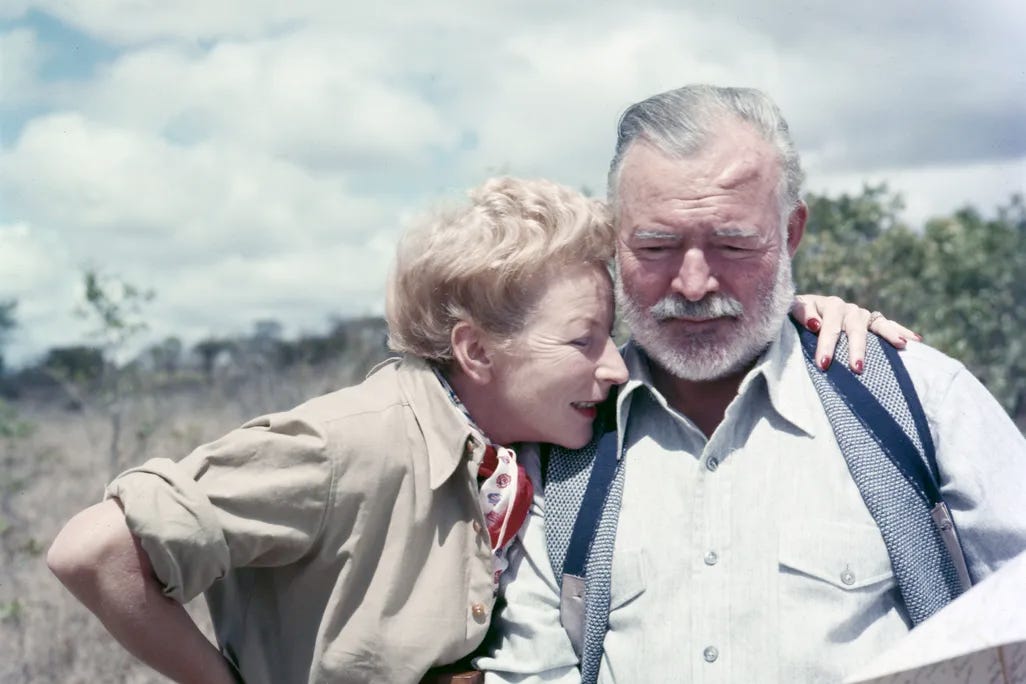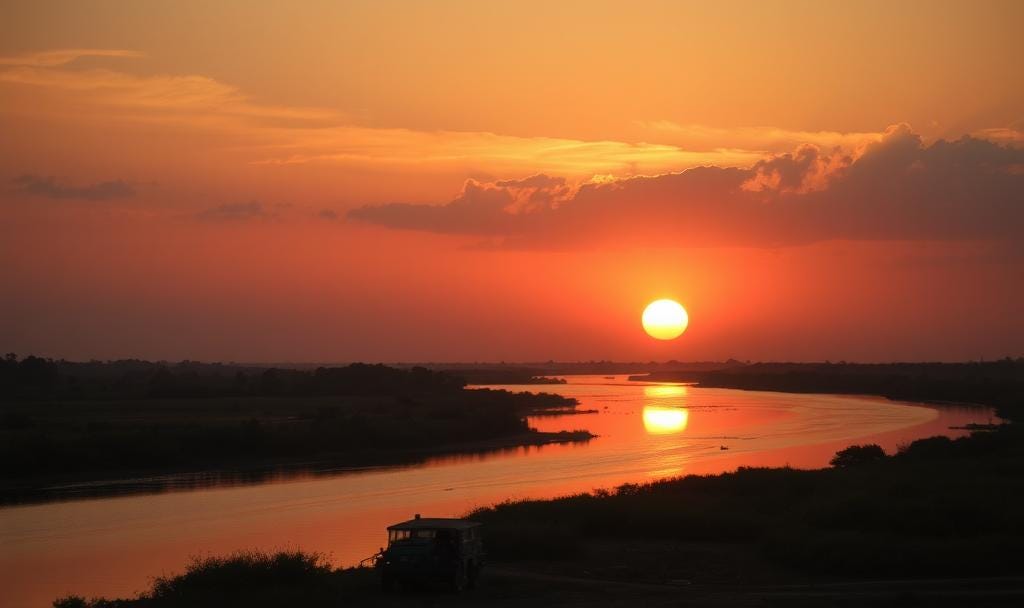How Ernest Hemingway Survived Two Plane Crashes in Two Days: Grit, Humor and Lessons for Life
How Ernest Hemingway’s wild African adventure of two plane crashes, a fiery escape, and a grin with gin teaches us timeless lessons in grit, humor, and resilience.
Today, we’re dropping into one of the most outrageous (and inspiring) real-life survival stories you’ll ever hear: the time literary legend Ernest Hemingway survived not just one, but two plane crashes on back-to-back days in the wilds of Africa.
This is a tale that has it all—adventure, danger, a touch of Hemingway’s signature humor, and deep wisdom about surviving the impossible. At the end of this post, we’ll look at some lessons we can learn from this.
The Safari That Went Sideways
In 1954, Hemingway—already a giant in American letters, big-game hunter, and multi-time survivor of life’s curveballs—was in his mid-fifties. To celebrate Christmas, he treated his wife Mary to a sightseeing flight over the famed Murchison Falls in Uganda. It seemed like the perfect adventure: lions, crocs, dramatic waterfalls. But in classic Hemingway style, it was about to go off-script fast.
Their small Cessna, piloted by a local expert, clipped a telegraph wire and took a nosedive. The trio crash-landed on the banks of the crocodile-infested Nile. Dazed but alive, Hemingway, Mary, and their pilot scrambled from the wreckage.
Imagine: you’re sitting next to a mangled plane, wild animals are lurking nearby, your supplies are limited, and you have no idea if rescue will come.
A Night in the Wild
That night, the stranded trio rationed their beer and whiskey (in true Hemingway fashion), made camp on the banks, and steeled themselves for whatever the savanna had to offer. Anything could have happened—elephants, hippos, lions—but they managed to avoid further danger until sunrise.
When dawn broke, hope arrived. A tourist boat spotted the survivors and whisked them off to a nearby town, where they could finally catch their breath. Relief, right Not quite.
Lightning Strikes Twice
If you think Hemingway’s luck had turned, think again. The next day, a second plane—a rescue aircraft—came to get the trio out of the country. But as they took off, disaster struck again: this plane crashed, then burst into flames.
Pinned in the cabin, Mary and the pilot scrambled out the window, but Hemingway couldn’t fit. With burns and a head wound, he used his own skull to smash the door open. He dragged himself from the burning wreckage, battered but alive. The legendary toughness he infused in his fictional heroes suddenly had a wild, messy, utterly human echo in real life.
Walking Into Town—And the Press
After this badassness, the Hemingways took a car to Entebbe. Waiting for them were hordes of reporters—and Hemingway, wrapped in bandages, strolled in grinning, armed with bananas and gin. In front of flashing cameras, he joked that his wife’s loud snoring had nearly attracted elephants. He seemed totally unfazed by the events.
But beneath the bravado, he and Mary were wounded, both physically and emotionally. Hemingway’s burns covered his arms and hands. He’d fractured his skull, bruised internal organs, and suffered persistent headaches. Mary broke several ribs.
Despite the injuries (which modern psychiatry believes contributed to his later tragic decline), Hemingway didn’t let the darkness swallow his spirit. In letters to friends weeks later, he shrugged off his wounds as an inconvenience:
"Everything fine here. Best always … Ernie."
What Do We Learn From Hemingway’s Survival Saga?
Here are a bunch of lessons that we can draw from Hemingway’s survival.
1. Humor is a Lifeline
Even the darkest situations can be disarmed—if only for a moment—by humor. Hemingway cracked jokes about his wife snoring the elephants away and made light of his own wounds. He proved that even in crisis, mindset is everything.
2. Grit Wins the Day
Hemingway's refusal to give up—even when faced with more bad luck than most people see in a lifetime—reminds us:
Toughness isn’t just macho bravado.
It’s about staying calm, using what you’ve got (even if that’s just your own head to smash open a plane door), and moving forward one battered step at a time.
3. Adaptability Matters
First night: stranded by water, no idea if rescue would come. Next day: forced to survive a fire inside a metal shell.
Hemingway adapted, made the best of every twist, and refused to get stuck in despair.
4. Preparation and Resourcefulness Aren’t Just for Scouts
Hemingway and Mary survived that first night in part by rationing their meager supplies and staying alert to danger. In survival—and life—planning, clear thinking, and practical action always help.
5. Never Take a Second Plane in Africa?
Okay, maybe this lesson is tongue-in-cheek, but there’s wisdom here about trusting your instincts, being careful with your choices, and that sometimes, sheer bad luck can find you anyway—so you’d better be ready!
Hemingway’s Survival, In His Words
His letter after the crash is full of classic Hemingway understatement, the kind of resilience and grit anyone can aspire to:
“Couldn’t write letters much on acc’t of right arm which was burned to the bone third degree … [but] all burns ok … The trouble is inside where right kidney was ruptured and liver and spleen injured… but have been a good boy and tried to rest.”
This humility, humor, and acceptance of pain as part of the adventure is both moving and instructive.
Bringing Hemingway’s Spirit to Our Own Lives
Odds are, you’ll never crash twice in two days in the African wild. But life throws other “plane crashes” at each of us: failed plans, broken hearts, financial messes, loss, uncertainty. Hemingway reminds us:
Meet adversity with courage, creativity, and humor.
Accept bruises, but keep moving.
Use setbacks to shape a story you’re proud of—even if it’s full of scars.
If survival is rooted in mindset, Hemingway’s story is one we can all borrow from, whether we face jungle perils, everyday life struggles, or battles of the soul.
So next time your plans nosedive, remember Hemingway—bananas, gin, and a bandaged grin—ready to turn disaster into a story worth telling.
If you enjoyed this, subscribe to The Rich Minimalist for more true stories, lessons in resilience, and inspiration for living bravely—with less.
Thank you for reading The Rich Minimalist. Please also take a look at the Welcome to The Rich Minimalist article, where I describe my mini manifesto and how it all fits into the bigger picture.
Or leave a ❤️ or a comment.




